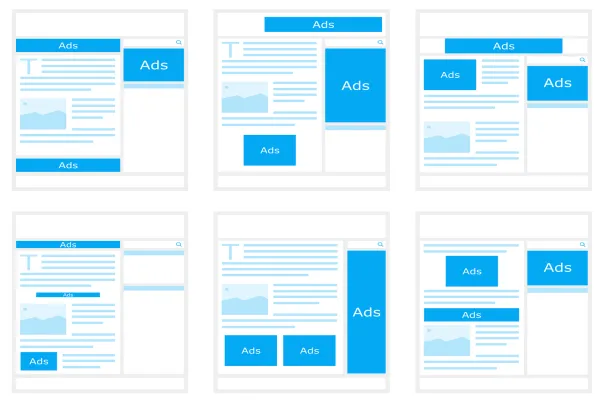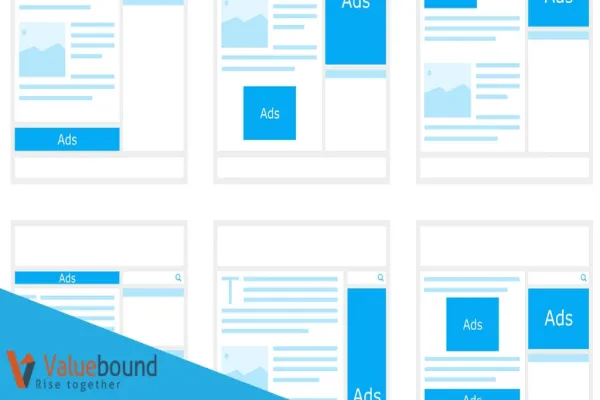AudienceProject, a Denmark-based marketing technology company, revealed that nearly 5% of mobile sessions were blocked in the U.S. in 2016. Germany has ranked high in desktop ad-blocking use. The research found that nearly 13% of mobile sessions were blocked in Germany.
There is no denying that ad blockers are putting a big dent in advertising-based business models on the web. And this has produced different reactions. The big question here is who blocks ads, why and how can you win them back.
In this post, we have tried to answer some of the relevant questions asked by publishing firms about ad blocking. This blog will answer questions like who block ads, why do they block it, who does not block ads, how do we win them and strategies to overcome ad blocking in the publishing industry. Check out our previous blog where we have discussed how top 10 Publishers dealing with AdBlocking.
So the question is who block ads?
According to Interactive Advertising Bureau (IAB), nearly 26% of users surveyed block ads on computers and 15% block ads on Smartphones. They tend to be men aged between 18-34 years.
The survey also found that anti-viruses are confused for ad blocking. Around 40% of the user think that they are using an ad blocker. The confusion comes from consumers thinking that antivirus software or pop-up blockers built into their browser are ad blockers.
Now the question arises, why do they block ads?
The answer is: no wants like to get interrupted in between. Especially consumers using ad blockers prefer uninterrupted, quick browsing and a streamlined digital experience. One of the important reason behind using an ad blocker on the personal computer is the perception that websites without ads are easier to navigate.
At the same time, smartphone users believe that ads slow down browsing. In contrast, consumers that are not using ad blockers tend to blame content for slow loading pages.
Some of the most annoying ad elements are ads that block content, long video ads before short videos, ads that follow down the pages as the user scrolls. In the end, it's important to understand ad blocker users are less tolerant of ads.
We often ignore asking ourselves, who does not block ads. Ignoring such questions may not be helpful as you will never know your customers and won’t get the result which you are looking for.
Often past users of ad blockers do not block ads. Readers blocked from accessing the content and messages asking them to unblock in order to view the content often drive then to uninstall the blocker extensions.
The most important question here is how do we win users who block the ad?
Start with implementing “LEAN principle (Light, Encrypted, AdChoice supported, Non-invasive ads)” that address a number of issues related to ad blocking. Further, there are several do’s and don’t that you can follow to win or retain users who block the ad.
Do’s
- Give users control to skip the video and/or thumbs up/down ratings.
- The other way you can win the user by assuring users of site safety. Ensure them or provide guarantees that site and ads both are secure and virus-free and won’t slow down browsing.
Don’ts:
- The biggest often site owners do is they disrupt their flow with ads that block content, long video contents, ads that follow down the page, autoplay, slow loading, pop-ups and full-page ads.
Strategies to overcome ad blocking in the publishing industry
According to a report from PageFair, in 2016, the usage of ad blocker has increased to 30%. The report also found that by the end of 2016, there were 615 million devices blocking ads of which nearly 308 million or 62% were of those mobiles.
For many years, ad blocking has been a major concern among the media and publishing company. But with the advancement in ad-blocking software and extension, it has gone from a mild irritation to a full-blown crisis.
When it comes to overcoming ad blocking in the publishing industry the very first solution that strikes my mind is how to deal with this problem.
Simply put, the solution is to give ad blocker users an ultimatum of whitelisting their website or face paywall. Undoubtedly, this is the best solution for some media and publishing enterprises, however, there are better chances that it may backfire.
In another word, there are chances that users may move to a competitor if they are blocked from accessing the content. Here are some of the strategies publishers can implement to overcome ad blocking.
Go creative or go native
There are two sides to every coin. The emergence of ad blockers is a wake-up call for publishers to become more reader-focused and provide them with easy navigation and enhanced user experience.
Publishers can use the “whitelisting” option to their advantage since most ad blockers provide this option. Ask your reader to white-list your website in order to get access to unique and quality content.
Have less intrusive advertising
Face it. We install ad blockers because some ads are annoying. From my understanding, I am not the only one who either leaves a site or install ad blocker when a page load-delay and obtrusive ads invade on the screen.
On the whole, we all don’t like ads but we understand why are there and as long as they don’t hinder our reading experience, we keep visiting and reading their content.
Aligning ad content more with the page context around them is one of the important characteristics of native ads. Thus, this can be a better option for publishers.
Native ads are less intrusive and do not conflict with a visitor’s experience. In addition, these ads add value for customers that make site visitor view more ad content.
Show your readers that you care about them
By know, we have a brief understanding of - who blocks ads, why, and how to win them back. We also know that big adverts pull people off and make them block ads.
Make your readers feel valued not only by making ads as minimalist and personalized as possible. Also, try to tailor everything else on your site to the reader and build trust by developing a relationship with them. Eventually, this will lead them to either whitelisting your website or pay a fee to read your content.
Strike a deal
In the end, as a publisher, you need to strike a deal with your readers. IAB suggests publishers two innovative approaches: offering tiered access to the content and rewarding them.
Give limited access to users who are using ad blocking software or extension. Communicate with them that more in-depth access is available only after whitelisting the site or turning off the ad blocker.
Reward them by giving credit or other elements to build positive relationships, which will ultimately enhance the trust between the two parties.
Commentary: The above-mentioned method may prove useful, but they are not a permanent solution and a temporary one. The actual solution lies in native advertising, which in most case not blocked by ad-blocker software. However, in the long-term, the solution should involve advertisers to go more creative, safer and privacy compliant and deliver a delightful user experience.
If you are a publishing company looking to increase your ARPU with paid subscriptions, memberships, events, and lead generation we can help. Get in touch with our Drupal experts to find the possible way to boost user engagement on your website.





